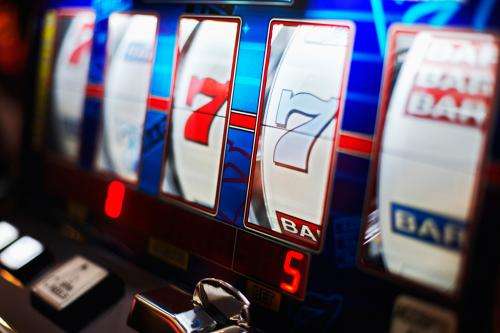Quantum dots make efficient decisions

Even the simplest forms of life face an endless barrage of decisions—where to search for sustenance, for example, or how to avoid predators. Various mathematical models can mimic these decision-making processes, coming to the same conclusions that a living organism might reach. One of these models, known as the softmax rule, offers the closest approximation of a human trying to maximize their winnings from a bank of slot machines.
Masahiko Hara from the RIKEN Global Research Cluster, in collaboration with Song-Ju Kim from Japan's National Institute for Materials Science and other researchers, has now developed a theoretical model based on quantum dots that outperforms the softmax rule at slot machine selection.
Quantum dots are tiny fragments of matter just nanometers in size. The model developed by the research team simulates the selection between two slot machines by using five of these dots arranged in a line—a small dot in the middle and a pair of medium and large dots on each side representing each of the two slot machines. Each machine has a different probability of hitting the jackpot.
The system chooses which slot machine to play by beaming a 'control light' at the large quantum dot on either the left or the right. The slot machine is then 'played' by shining a second light at the small dot in the center. This triggers a quantum excitation that is shared with the medium quantum dot in the chosen machine. The medium dot emits this energy as light, signalling which machine to play next.
After each play, the control light moves slightly toward the winning machine. By adjusting the intensity of the light in this way, the system soon settles on an optimal balance between the two machines. If one machine were to be four times more likely to 'pay out' than the other, the system could win more than 98 per cent of its games within 200 tries. If the machines' payout probabilities change, the quantum dot system also adapts and does so more quickly than the softmax rule. The system therefore represents a nanoscale device that can make decisions efficiently and adaptively by exploiting the intrinsic optical properties of quantum dots.
The model's optical energy transfer system has already been used in quantum-dot systems, says Hara, and the team is now trying to build a working version of their decision-maker. Hara notes that such systems might offer an extremely efficient way to make decisions in trial-and-error tasks.
More information: Kim, S.-J., Naruse, M., Aono, M., Ohtsu, M. & Hara, M. "Decision maker based on nanoscale photo-excitation transfer." Scientific Reports 3, 2370 (2013). dx.doi.org/10.1038/srep02370
Journal information: Scientific Reports
Provided by RIKEN

















